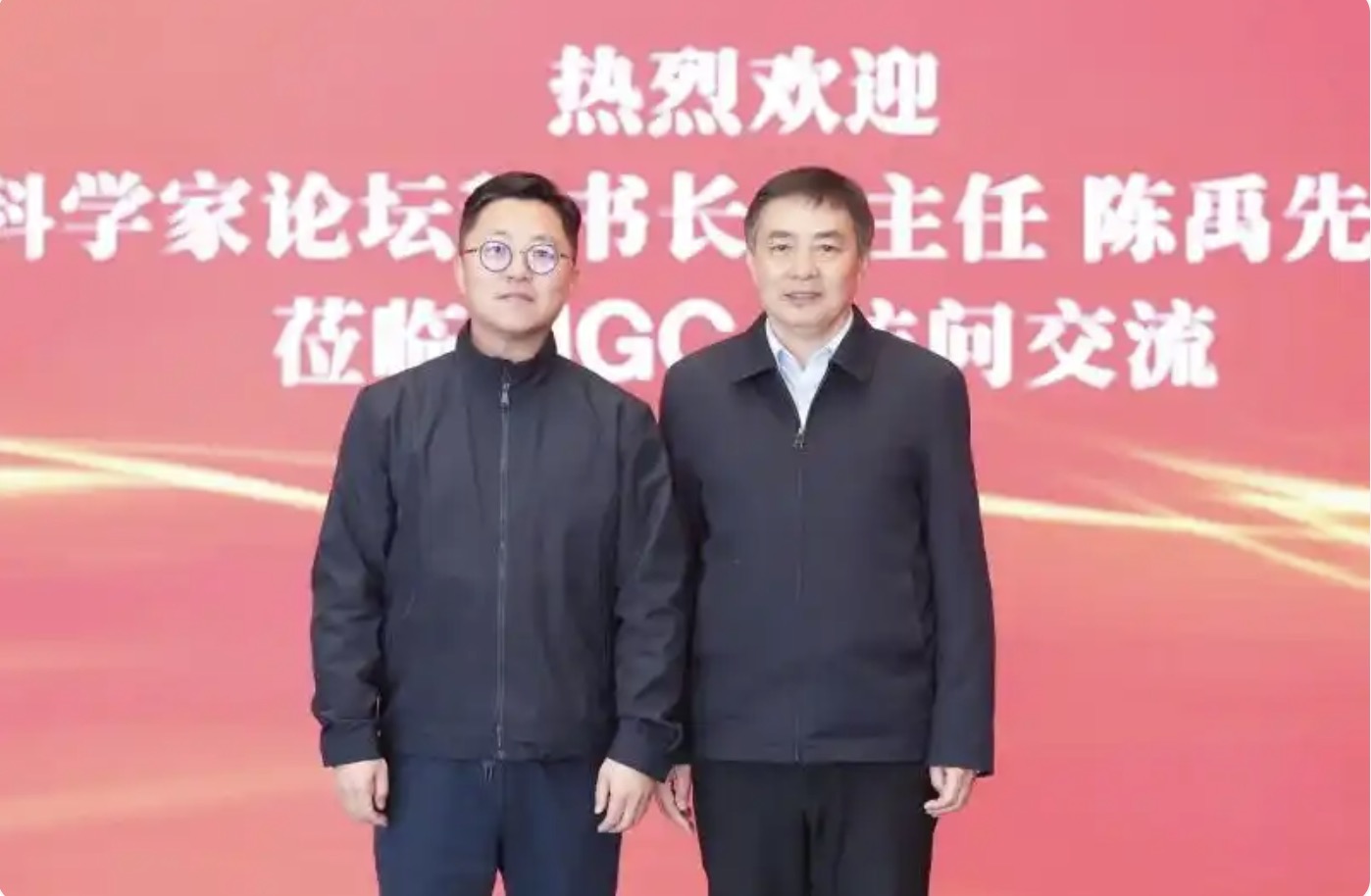Home > Information > News
#News ·2025-01-03

Today, the term "algorithmic trading" is widely used. But its true meaning is often debated.
That's okay. Let's get into the details of this concept.
The definition of the algorithm is not complicated, even rather simple. An algorithm represents a set of instructions that enable a computer program to combine different sources of information (data) to produce the desired result.
Nowadays, whenever we talk about algorithms, we cannot avoid the two elements of AI and data. Both are equally straightforward: At its core, AI is a way to organize, analyze, and apply data to get results. Data is anything that can be digitized and presented in numerical form. Any information - including photos, text and speech - can be digitized and expressed in numerical form.
The corresponding output can be as simple as determining the mean value of a data set or as complex as predictive analytics for operating a self-driving car. Analyzing the results and then improving and tweaking the program and data input to get better results is what machine learning, or deep learning, is all about.
As for trading, I believe everyone is more familiar with it - basically, it is a collective term for the trading of bonds, stocks, options and other financial instruments.
Fun fact! The concept of algorithms comes from Muhammad ibn Musa al-Khwarizmi, a Persian mathematical genius who lived around 780 AD.
So when you combine the two, what exactly is algorithmic trading?
James Pruskowski, chief investment officer and co-founder of 16Rock Asset Management, gives a prime example. The company's municipal bond trading model combines AI with algorithms to regularly monitor market data - including trades, volume, spreads, buy requests, quote requests, and other inputs. It uses a programming model to analyze market data and then identify pricing anomalies to find arbitrage opportunities. By updating the buy and sell parameters regularly, the computer can bid/buy and ask/sell.
This is a fully automated process and everything can be done in a matter of seconds. New trading data is uploaded, analyzed, and the model is constantly updated to identify the best opportunities that may arise with new information. The whole business continues to operate in this cycle.
James notes that AI and algorithmic trading are clearing the municipal zero share market (the portion of the market that consists of bonds with a face value of $100,000 or less). He also observed that the growth of assets in independently managed accounts (SMAs), as well as municipal ETFs (traded open index funds), left many market participants with a passive acceptance of prices.
Whether they are financial advisers or ETF managers, the complexity of their operations often forces them, and even the operators of large retail telecommunications companies, to passively accept prices when they are faced with a pressing need to invest or sell. These prices tend to reflect asking prices with higher yields and bids with lower yields. Accordingly, the level of the market benchmark curve derived from these trades, such as the ICE US Municipal AAA Curve, also reflects low-priced, high-yield trades that are more favorable to these price takers. In James' view, this is how the passive side can proactively define the profit opportunity in today's market.
Josh Rosenblum, head of algorithmic trading at Brownstone Investment Group and previously head of municipal trading strategies at the firm, takes a different view. By combining the billions of dollars in assets held by mutual funds and SMA advisors with electronic trading platforms, he believes buy-side firms can move from price-taker to price-setter. In addition, through these platforms, buy-side businesses can trade directly with each other. The relationship between broker and client is evolving into a partnership designed to create mutually beneficial workflows.
According to his observation, there are already signs of narrowing spreads in the zero stock market driven by algorithmic trading, and he points out that AI-generated predictive pricing analytics also establish self-fulfilling pricing prophecies. If the model believes that the next transaction in a bond is likely to be valued at a certain price, then the maximum bid and ask prices that investors are willing to accept will generally fluctuate slightly within that range. In other words, AI predictions are shaping reality. In addition, the "investor" on the other side of the transaction is also likely to reflect the judgment of the AI model more. While this can have positive effects, such as better market liquidity, the over-reliance on computers and AI models inevitably creates new challenges.
James and Josh agree that AI, electronic trading platforms, and algorithmic trading are triggering a new technological arms race. The anxiety that no one wants to be left behind is driving the rapid adoption of these technologies.
This is particularly evident in the speed of execution. If you can't trade faster than your competitors, we can't buy bonds. Without bonds, there is no performance, and without performance, investors cannot be attracted. This is a real fight to the death.
Proprietary funds are not alone in using algorithms to trade.
This is another classic build-or-buy decision for broker-dealers who want to remain active in the municipal bond market. Toronto-dominion Bank acquired Headland Tech Holdings in 2021; Just over a year later, Raymond James acquired SumRidge Partners as part of its ongoing strategy to expand its trading business with technology as its backbone. The big broker-dealers and asset managers, such as Goldman Sachs and BlackRock, have mostly built themselves in-house to stay competitive, but hiring top software engineers is often interpreted as another acquisition. At the same time, however, some rated companies have chosen to abandon municipal bonds directly: Citigroup announced the official closure of its municipal bond business in 2023.
Given its direct impact on the market, the industry's interest in algorithmic trading is entirely understandable. However, there is another algorithm-based technology that is expected to have the same impact on the market.
ChatGPT is an algorithm-based, more specifically, large language model-based machine learning scheme. It is built on the GPT (Generative Pre-Trained transformer) architecture and is designed to understand and generate text results similar to human language capabilities. It uses not a single algorithm, but a whole complex system involving a large number of components. Of course, the whole process can still be described as an algorithm that uses machine learning to generate responses based on patterns in the data it sees.
In fact, the entire preceding paragraph was written by ChatGPT.
As a fascinating emerging technology, ChatGPT puts almost everything we can imagine within reach, from planning a Central American cruise to generating Python code to performing cutting-edge procedures for hip conversion surgery. Type in a question and ChatGPT will answer it a few seconds later.
And the specific interaction is not limited to entering text to get answers. Anyone who has used Apple's Siri or Amazon's Alexa will have experienced the shock of voice communication. On the other hand, Speechify can transform anything into audio - including text, PDF documents, and emails - and read to users in high-quality, synthesized speech.
If you prefer video form, Pictory can provide Vincennes video, URL video, PPT video and other video generation functions. You can paste this whole article into Pictory to see how this technology can turn simple written notes into Hollywood-style blockbuster videos.
In short, AI has unlimited ability to interact. As long as you dare, you can provide AI implementation in any communication medium.
That, of course, includes the "conversation" with municipal bonds.
Many friends may wonder, why "talk" to bonds? Let's take the example of Munibonds.ai, a company founded in 2024 that offers AI chat. Users can enter questions about bonds, and the app generates very detailed responses. This kind of user-driven input is obviously much more powerful than a rigid drop-down menu list that is highly restrictive.
Whenever you have disclosed information, whether it's a preliminary official statement or a recent quarterly financial report, the app finds the data and generates the answers, turning the massive PDF files in the municipal bond market into machine-readable content. And that's just the state of the art, or the beginning, of AI.
Munibonds.ai not only provides interactive search capabilities, but also provides sentiment analysis and portfolio and bid list recommendations for any bond by tracking user queries and other external market data. Yes, it's that powerful.
It even offers a digital "bond ranking." While not yet at the level of a credit rating, the reports generated by chat technology, including a range of fundamental analysis, are pretty close to standard credit rating reports, provided they are complemented by the right user prompts.
By establishing customized demand parameters and automating the execution process, everyone from portfolio managers, traders, analysts to compliance officers can access credit, structure, yield use, market sentiment, and other decision or reporting information for any bond or portfolio in near real time.
All they have to do is ask questions.
Predict the future
We can imagine a perfect Laplacian AI model that has complete knowledge of every piece of data in the universe, past and present, to the supreme state of omniscience, capable of predicting the future perfectly and accurately. Whether such a system is an angel or a demon is debatable, but after continuing to follow the dynamics of the AI field, it is clear that this is the ultimate goal of those who develop and apply AI solutions.
Of course, this goal will never be fully achieved. But for the municipal bond market, even if only the knowledge gained through AI approximates a similar outcome step by step, it is far more accurate than existing crude solutions.
So here are my personal predictions for the future of AI for municipal bonds:
Niels Bohr, the Nobel laureate in physics, once said that predictions are hard, especially predictions about the future, and it is easy to dismiss all predictions that currently exist only in the imagination with the phrase "it will never happen."
But before you rush to judgment, remember this: in technology, the real question is never "can it be done?" but "how?" and then "how fast?"
Because if history teaches us anything, it's that one thing has always been true:
Only technology can have the last laugh.

2025-02-17

2025-02-14

2025-02-13
friend link


400-000-0000
立即获取方案或咨询
top